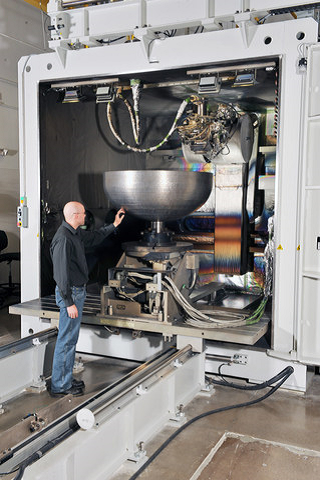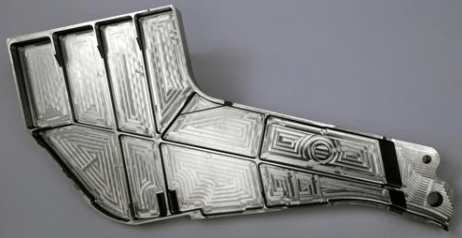The Manhattan Project was one of the largest civil engineering and construction projects in the world, primarily taking place in Tennessee, New Mexico, and Washington. It employed over 130,000 people and cost $2 billion at the time, approximately $30 billion in today’s dollars. When compared to the current defense budget of over $800 billion, the Manhattan Project appears to be very cost-effective. The US currently spends around $30 billion a year on Navy shipbuilding alone and allocates a similar amount to the Department of Energy for the maintenance of the current nuclear arsenal. This amount is roughly equivalent to the total defense spending of Italy or Australia, countries that are the 12th and 13th highest spenders on defense globally.
If you built a house and then spent the cost to acquire it annually on maintenance, you would probably reconsider your investment. Yet, the military-industrial complex trudges on, with doomsday devices ushering in financial gloom for the wealthiest nation in the world. The current situation is comparable to the complete economic output of 11 million Americans being used for the military. Even though the amounts spent on the military seem excessive, they are affordable for the nation as a whole. Indeed, the US could allocate this funding to other areas, such as education, where it currently spends an equivalent amount on schools. However, the current state of political debate and division in the US means that depending on which camp you identify with, your opinion on most issues is likely predetermined. Irrespective of the facts, your perception of the truth is already formed.
The most significant danger to the long-term interests of the United States lies in the shift from capital allocation through the “invisible hand” to allocation through the very visible hand of lobbyists. The US does not necessarily obtain the best military equipment at the best prices, but rather, it ends up funding pork barrel bills and catering to pigs at the trough. The presence of lobbyists, a few defense insiders, and a self-sustaining industrial complex not only defines what is being spent but also directs the spending, perpetually deepening the trough without regard for effectiveness. This inefficient capital allocation was one of the primary factors behind the Soviet Union’s loss in the Cold War. Now, facing conflicts against Russia and China, the question arises: Will the US prevail once again?

A Lockheed Martin engineer inspects one of the 3D printed dome prototypes at the company’s space facility in Denver. The final dome measures 46 inches in diameter, large enough to fit 74.4 gallons of liquid.
At first blush, the United States’ lead in weaponry and spending seems to guarantee its superiority. However, the scenario becomes more complex if China is more efficient in producing equivalent military equipment, potentially unfolding an Innovator’s Dilemma where China can match the US militarily by outproducing it at lower costs. This raises the concern that the US, despite its superiority, could be intentionally spread thin through manufactured conflicts worldwide. There’s a possibility that at every critical point, the US could be outmatched and delayed by an inferior but strategically entrenched enemy. The question arises: What if the US, superior in every aspect, is held at bay by a “good enough” and more cost-effective adversary? Moreover, it might be easier to undermine the political will and checks and balances within US society than to achieve a military victory. The recent experiences in Iraq and Afghanistan underscore a painful realization that the US has not secured a major conflict victory since World War II, suggesting that endurance and strategic patience could be effective strategies against it.
It somehow feels mean to say this but we live by the dying embers of democracy in an increasingly autocratic world. The light is going out and there seems no reasonable alternative. It feels like we’re at the cusp of chaos and darkness. The backrooms have bested the voting booths. As this happens the US military is adopting additive in a major way. In some ways this could be very effective for them while I think that for other things the entire affair is a squandered opportunity. Yes, the US military is doing a lot to Master additive but it is doing it within the confines of a broken system that will not let them win. Yes, it is doing well in making qualified parts but it could revolutionize the way that it can wage war more effectively. It is kind of like the Weather Service using computers to book meeting rooms rather than to better predict the weather.
Tactically, 3D printing has a lot to offer the military, but strategically it may very well lead to a war-winning opportunity. To be clear, let’s sum up some of the advantages AM lends to national defense:
- On-the-spot improvisational repairs in remote areas
- Customization of gear for new tactics or environments
- Repurposing existing equipment for novel uses
- Accelerated iterative improvement of military hardware
- Creation of decoys for military deception
- Quicker and more cost-effective repairs from personal gear to warships
- More efficient sustainment and reduction in logistics footprint
- Fabrication of previously impossible structures
- Reduction in mass and part count of military components
- Integration of multiple functions into single components
- Significant cost savings across various applications
- Improved ergonomics and comfort for personnel
- Enhanced performance of warheads, rocket propulsion, jet engines, and munitions
- Superior composite armor for personnel and vehicles
- Improved armor penetration capabilities
- Advanced radar and antenna designs
- More affordable and effective satellites
- Improved drone technology and faster production rates
- Quicker production of naval hulls and composite missiles
- On-site vehicle repair with Direct Energy Deposition (DED)
- Reduced need for shipping materials through recycling and reuse
- Autonomous construction of defensive structures
- Less material needed for overseas military installations
- Fuel consumption reduction through lighter equipment
- Enhanced sensor technology and deployment
- Reduced maintenance and repair labor for frontline troops
- Extension of equipment lifespan through added wear surfaces
- Turbine blade repair
- Adaptation and manufacturing of defense robots
- Versatile manufacturing capabilities for tanks and other containment vessels
Now, the above list isn’t exhaustive, but within that list, we can see incredibly significant opportunities. If you’d like, we could delve more deeply into the above cases. However, I think it’s more important that we zoom out a bit and consider the squandered opportunity in 3D printing for the military, because this could potentially be even bigger.
Subscribe to Our Email Newsletter
Stay up-to-date on all the latest news from the 3D printing industry and receive information and offers from third party vendors.
You May Also Like
3D Printing Webinar and Event Roundup: April 21, 2024
It’s another busy week of webinars and events, starting with Hannover Messe in Germany and continuing with Metalcasting Congress, Chinaplas, TechBlick’s Innovation Festival, and more. Stratasys continues its advanced training...
3D Printing Webinar and Event Roundup: April 14, 2024
We’re starting off the week’s 3D printing webinars and events at ASTM AMCOE’s 11th Snapshot Workshop and MACH Exhibition. Stratasys continues its advanced training courses, SME is holding a virtual...
Polly the Duck to Receive 3D Printed Bill Prosthetic
In Williamson County, Texas, a story of resilience, innovation, and cross-community effort is unfolding, illustrating the bond between humans and wildlife. All Things Wild, a wildlife rehabilitation center, has been...
3D Printing News Briefs, April 3, 2024: Kickstarter FDM 3D Printer, Artificial Eyes, & More
In 3D Printing News Briefs today, we’re talking about an FDM 3D printer on Kickstarter, advancements in artificial eye creation, and 3D printed solenoids for electromagnets. Then we’ll move on...


































